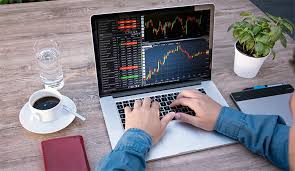
The Ultimate Guide to Opening a Forex Trading Account
Opening a Forex trading account is the first step on your journey to becoming a successful trader in the foreign exchange market. Whether you are a novice looking to learn the ropes or an experienced trader seeking new opportunities, knowing how to open an account properly is crucial. This guide will walk you through the entire process, covering everything from selecting the right broker to understanding the different types of accounts available. Additionally, we’ll provide insights on vital documentation and other challenges you may face along the way. Looking for the best platforms? Consider the advantages of forex trading account opening Thai Trading Platforms that may fit your needs.
1. Understanding Forex Trading Accounts
Before diving into the steps of opening a Forex trading account, it’s essential to grasp what a Forex account is. A Forex trading account is a virtual account that enables you to trade currencies on the Forex market. These accounts can be funded with real money, allowing you to trade various currency pairs while utilizing leverage to magnify your trading potential.
2. Choosing the Right Broker
The first and one of the most critical decisions you will make is selecting a Forex broker. Your choice can significantly affect your trading success and overall experience. Here are some factors to consider when making your selection:
- Regulation: Ensure that the broker is regulated by a recognized financial authority. This ensures a level of security for your funds and trading operations.
- Trading Platform: Look at the trading platform offered by the broker. It should be user-friendly, with features that cater to your trading style.
- Spreads and Commissions: Compare the spread (the difference between the buying and selling price) and any commission charges that the broker may impose.
- Customer Support: Evaluate the quality of customer service, especially if you are new to trading. Reliable support can be crucial when you face issues.
3. Types of Forex Trading Accounts

Forex brokers usually offer various types of trading accounts for different levels of traders. Understanding these types can help you choose the right account for your trading goals. Here are some common types:
- Standard Account: This account type usually requires a higher minimum deposit and offers standard lot sizes. It’s suitable for experienced traders.
- Mini & Micro Accounts: These accounts require smaller deposits and allow trading in smaller lot sizes, ideal for beginners.
- ECN Accounts: Electronic Communication Network (ECN) accounts offer direct access to the interbank market. They usually feature lower spreads but charge commissions.
- Islamic Accounts: For Muslim traders, these accounts are designed to comply with Sharia law, typically offering swaps-free trading.
4. Required Documentation
To open a Forex trading account, you will need to submit certain documents. This is part of the Know Your Customer (KYC) regulations intended to prevent fraud and money laundering. Common documentation typically includes:
- Identification: A government-issued ID, such as a passport or driver’s license.
- Proof of Address: Documents like utility bills or bank statements that confirm your current address.
- Financial Source: Some brokers may also request proof of income or funding source, such as bank statements.
5. The Account Opening Process
Each broker may have a slightly different process, but generally, here are the steps you would follow to open a Forex trading account:
- Visit the Broker’s Website: Navigate to the official website of the broker you’ve chosen.
- Fill Out the Application Form: Complete the necessary personal information, including your name, email, phone number, and address.
- Submit Required Documents: Upload any required identification and proof of address documents as stipulated by the broker.
- Verification: The broker will verify your submitted documents. This can take anywhere from a few hours to several days.
- Deposit Funds: Once your account is verified, fund your account using one of the accepted payment methods.
- Start Trading: With your account funded, you can now access the trading platform and begin executing trades.

6. Choosing the Right Trading Platform
When you open a Forex trading account, the broker will typically provide a trading platform. Key considerations for choosing an appropriate platform include:
- User Interface: Is the platform intuitive? Can you easily navigate charts and execute trades?
- Tools and Resources: Look for a platform that offers a range of tools, including technical analysis resources, charting software, and educational materials.
- Compatibility: Ensure that the platform is compatible with your devices, whether you prefer trading on a desktop, mobile, or via web-based platforms.
7. Common Mistakes to Avoid
When opening a Forex trading account and starting to trade, some common pitfalls can derail your success. Here are a few mistakes to keep in mind:
- Not Researching Brokers: Avoid choosing a broker based solely on marketing or recommendations. Research and ensure they meet your criteria.
- Overtrading: New traders often think that trading more frequently will result in higher profits. Overtrading can lead to losses instead.
- Ignoring Risk Management: Failing to implement risk management strategies can expose your trading capital to significant losses.
Conclusion
Opening a Forex trading account is an exciting step into the dynamic world of currency trading. By conducting thorough research, selecting the right broker, understanding the types of accounts available, and preparing the necessary documentation, you can set yourself up for success as a trader. Remember that education and consistent practice are vital components that contribute to your long-term success in the Forex market. Happy trading!